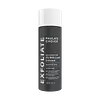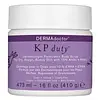What's inside
What's inside
 Key Ingredients
Key Ingredients

No key ingredients
 Benefits
Benefits

 Concerns
Concerns

 Ingredients Side-by-side
Ingredients Side-by-side

Water
Skin ConditioningHydrated Silica
AbrasiveLactic Acid
BufferingCaprylic/Capric Triglyceride
MaskingStearyl Alcohol
EmollientCetyl Alcohol
EmollientSorbitol
HumectantSodium Hydroxide
BufferingCetearyl Alcohol
EmollientGlycolic Acid
BufferingGluconolactone
Skin ConditioningLactobionic Acid
BufferingSalix Alba Bark Extract
AstringentOenothera Biennis Oil
EmollientBorago Officinalis Seed Oil
EmollientRibes Nigrum Seed Oil
EmollientCamellia Sinensis Leaf Extract
AntimicrobialGlycerin
HumectantEthylhexylglycerin
Skin ConditioningXanthan Gum
EmulsifyingCetearyl Glucoside
EmulsifyingSodium Chloride
MaskingSodium Lauroyl Methyl Isethionate
CleansingPhenoxyethanol
PreservativeWater, Hydrated Silica, Lactic Acid, Caprylic/Capric Triglyceride, Stearyl Alcohol, Cetyl Alcohol, Sorbitol, Sodium Hydroxide, Cetearyl Alcohol, Glycolic Acid, Gluconolactone, Lactobionic Acid, Salix Alba Bark Extract, Oenothera Biennis Oil, Borago Officinalis Seed Oil, Ribes Nigrum Seed Oil, Camellia Sinensis Leaf Extract, Glycerin, Ethylhexylglycerin, Xanthan Gum, Cetearyl Glucoside, Sodium Chloride, Sodium Lauroyl Methyl Isethionate, Phenoxyethanol
 Reviews
Reviews

Ingredients Explained
These ingredients are found in both products.
Ingredients higher up in an ingredient list are typically present in a larger amount.
Sodium Hydroxide is also known as lye or caustic soda. It is used to adjust the pH of products; many ingredients require a specific pH to be effective.
In small amounts, sodium hydroxide is considered safe to use. However, large amounts may cause chemical burns due to its high alkaline.
Your skin has a natural pH and acid mantle. This acid mantle helps prevent harmful bacteria from breaking through. The acid mantle also helps keep your skin hydrated.
"Alkaline" refers to a high pH level. A low pH level would be considered acidic.
Learn more about Sodium HydroxideWater. It's the most common cosmetic ingredient of all. You'll usually see it at the top of ingredient lists, meaning that it makes up the largest part of the product.
So why is it so popular? Water most often acts as a solvent - this means that it helps dissolve other ingredients into the formulation.
You'll also recognize water as that liquid we all need to stay alive. If you see this, drink a glass of water. Stay hydrated!
Learn more about Water